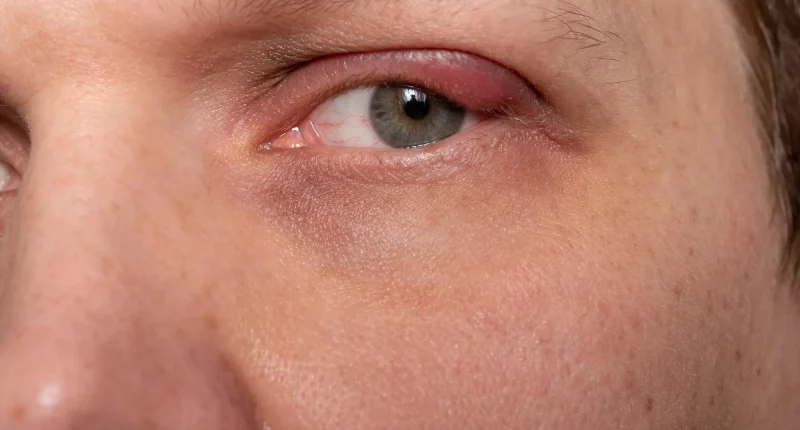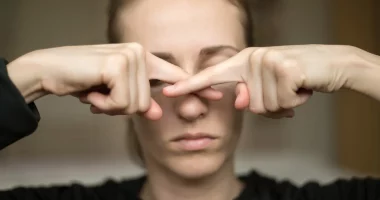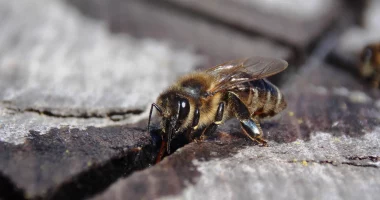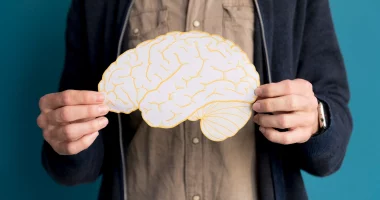A chalazion is a tiny, gradual-growing cyst or bump that appears inside the eyelid. It often forms when one of the meibomian glands, which are located along the edge of the eyelid, gets blocked or inflamed. These glands normally produce oil that keeps the surface of your eye lubricated and comfortable.
In many cases, a chalazion will go away on its own over time. While it heals, there are some home remedies you can try to assist speed up the process. However, if the chalazion doesn’t improve or causes significant discomfort, you might need medical treatment.
Symptoms
In the beginning, a chalazion starts as a small, red, and swollen part on the eyelid. After a few days, this swelling often turns into a lump that grows slowly but doesn’t hurt.
A chalazion may show on either the lower or upper eyelid, but it is more commonly found on the upper lid. While chalazia (plural of chalazion) are usually not painful, they might make your eye watery and slightly irritated.
If a chalazion becomes very large, it can press against the eyeball and cause blurred vision. However, it typically doesn’t cause overall swelling or pain of the entire eyelid.
Causes and Risk Factors
Chalazia frequently happens to individuals who have other inflammatory conditions that affect their skin or eyes. Some of these conditions include:
- Chronic Blepharitis: Long-term inflammation of the eyelid edges.
- Acne Rosacea: A skin condition that causes redness and visible blood vessels on the face.
- Seborrheic Dermatitis: A condition that causes flaky, red skin, often on the face or scalp.
- Meibomian Gland Dysfunction: When the oil-producing glands in the eyelids don’t work properly.
Chalazia can also develop from less common causes, like tuberculosis or viral conjunctivitis. In rare cases, a kind of skin cancer called sebaceous cell carcinoma might look like a recurring chalazion.
People who have had a chalazion or stye in the past are more likely to get chalazia again in the future.
Treatment in Home
A chalazion generally needs minimal medical intervention and often clears up on itself within weeks. During this time, it’s important not to squeeze or pop the chalazion, this can heighten the chance of an infection of the eye.
To help the chalazion heal and promote drainage, you can use several safe home treatments. One effective method is warm compresses. A warm compress can soften the inured oil obstructing the ducts of glands, making it easier for the ducts to open & drain.
To use a warm compress for treating a chalazion, start by soaking a soft, cotton pad or clean cloth in warm water. Twist out excess liquid to ensure it is damp but not dripping.
Place the warm, damp pad or cloth on the affected eyelid and leave it there for 10 to 15 minutes. Make sure to re-wet the compress frequently to keep it warm throughout the treatment.
Repeat this process many times a day until the inflammation decreases and the chalazion begins to heal.
Make sure to utilize a clean cloth or a new cotton pad each time to avoid reusing and risking infection.
Another helpful technique is gentle massage. After applying a warm compress, wash your hands thoroughly to ensure they are clean. Gently rub the eyelid with your fingers for a few minutes each day to help the oil ducts drain better. Continue this routine until the chalazion starts to drain, and then make the area clean while avoiding unnecessary touching.
Over-the-counter treatments can also be beneficial. Products like solutions, ointments, and medicated pads may help decrease irritation and prevent infection. Consult with a pharmacist for recommendations on suitable products.
Lastly, to stop further irritation or discomfort, it’s best to avoid putting on contact lenses or eye makeup till the chalazion gets well. Additionally, minimize touching the eye with your hands to decrease the risk of infection.
Chalazion Surgery
If someone has a persistent or severe chalazion that doesn’t improve with home treatment, a healthcare provider might suggest an operation to eliminate it. This procedure is usually done in the healthcare provider’s office with local anesthesia, which means you will be awake but won’t feel pain in the area being treated. During the surgery, the healthcare provider will make a small incision in the chalazion to clear the fluid and help the eyelid heal. It’s important not to attempt this on your own at home, as it could lead to infection or other complications.
Sometimes, chalazia can come back even after treatment. If a chalazion keeps recurring, the healthcare provider might perform a biopsy. A biopsy includes taking a small sample of tissue from the lump to check for any symptoms of a more severe condition.
In some cases, healthcare providers might also use corticosteroid injections. These injections help to decrease inflammation and can assist in treating the chalazion.
When to See a Healthcare Provider
If a chalazion does not drain or heal within a month, it’s important to see an eye specialist. The healthcare provider will enquire about your symptoms and examine the affected area to make sure it’s not another condition.
In some cases, the healthcare provider might suggest a steroid injection to help decrease swelling. This decision will depend on the chalazion’s size, location, and number. For very large chalazia, the healthcare provider may need to perform a procedure called lancing to drain the lump. It’s important not to attempt this at home.
If you notice symptoms of a bacterial infection, like pain or increased soreness, contact your eye specialist right away. They may suggest oral antibiotics or ointment to treat the infection.
Seek immediate medical attention if you experience any of the following symptoms:
- Serious pain or swelling
- Rapidly spreading swelling
- Changes in your vision
- Double vision
- Fever
- Painful movements of the eye
Chalazion Prevention
Preventing a chalazion entirely may not always be possible, but there are steps you can take to decrease your risk. First, avoid rubbing your eyes, as this can irritate the eyelids and increase the likelihood of developing a chalazion. Always wash your hands before touching your eyes or inserting contact lenses to minimize the risk of introducing bacteria.
Keep your eyes safe from air pollution and dust by wearing safety goggles or sunglasses. Keeping your eyelids clean is also crucial; use special eye cleansers and make sure to remove all eye makeup while going to sleep. To further stop bacterial growth, restore eye makeup, like mascara, every three months.
Avoid sharing items that come into contact with your eyes, like washcloths or towels, to decrease the risk of spreading bacteria. If you frequently develop chalazia because of blepharitis, consider using certain eyelid cleansers daily. Premoistened specific eyelid scrubs or cleansing wipes can help keep the eye area clean and decrease the chance of recurring chalazia.
Summary
A chalazion is a slow-growing lump in the eyelid that often resolves on its own but may need medical treatment if persistent. Early symptoms include a small, inflamed area that turns into a painless lump. Home treatments like warm compresses and gentle massage can help, and over-the-counter products may provide additional relief. If a chalazion doesn’t improve within a month, or if signs of infection or vision changes occur, seek medical advice. Prevention includes avoiding eye rubbing, maintaining hand hygiene, protecting eyes from pollutants, and keeping eyelids clean. Regular replacement of eye makeup and avoiding shared items can also help decrease the risk.
External links









